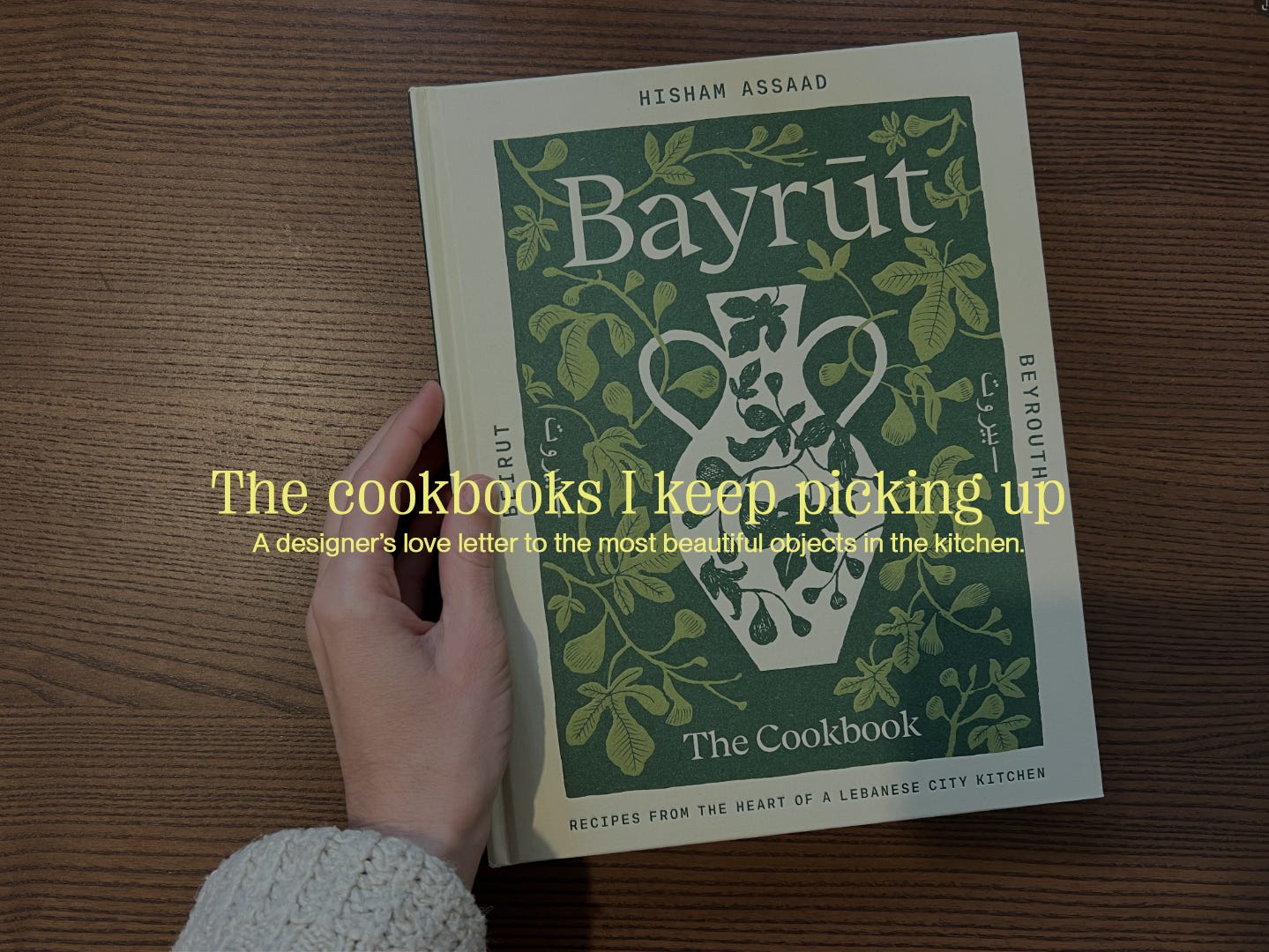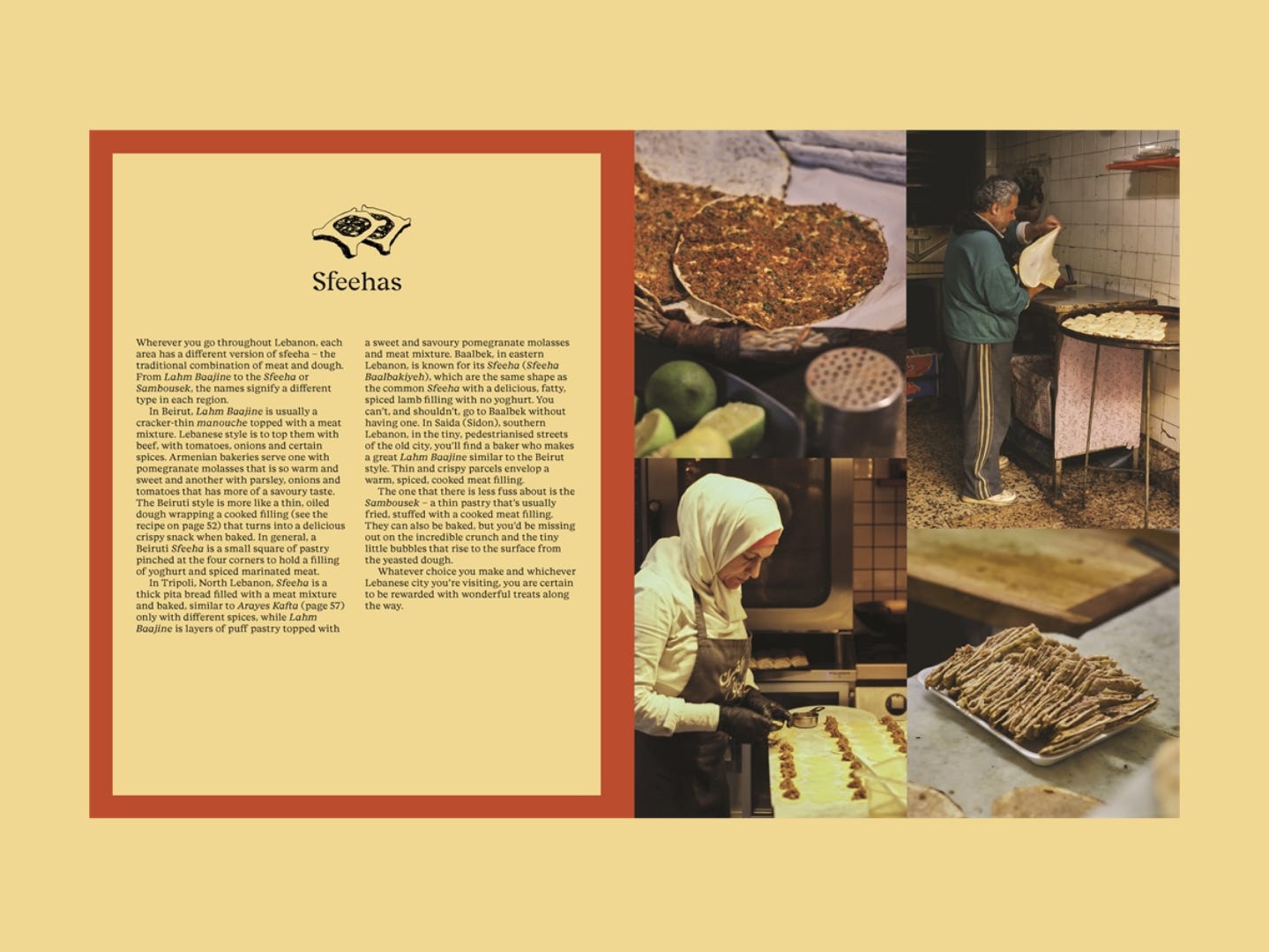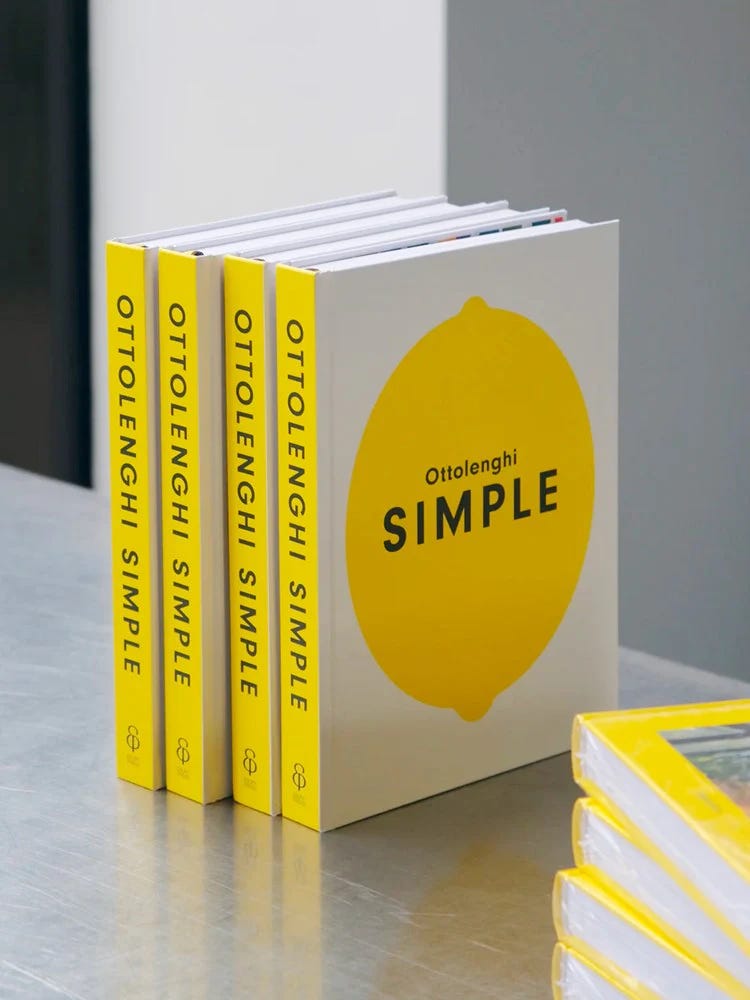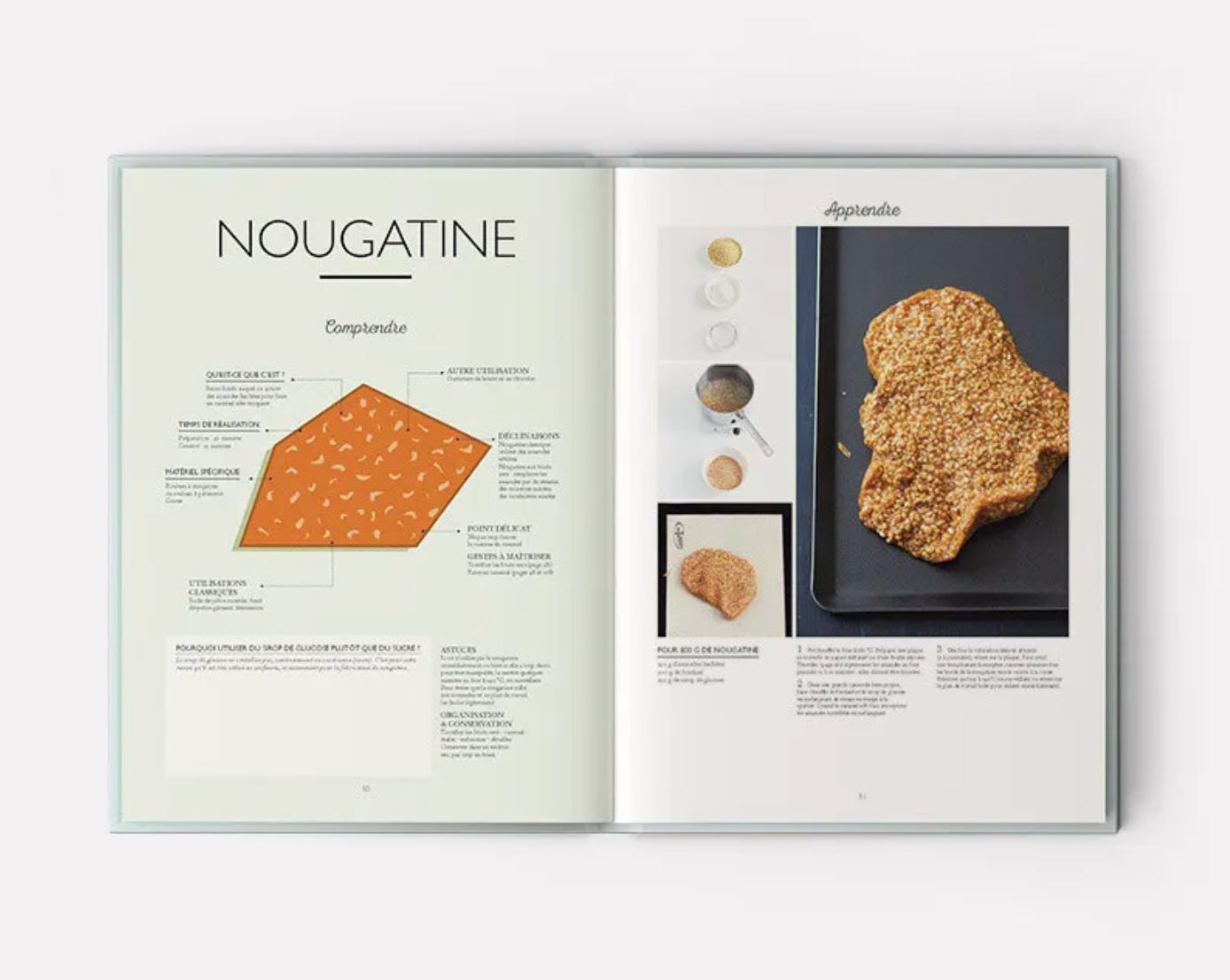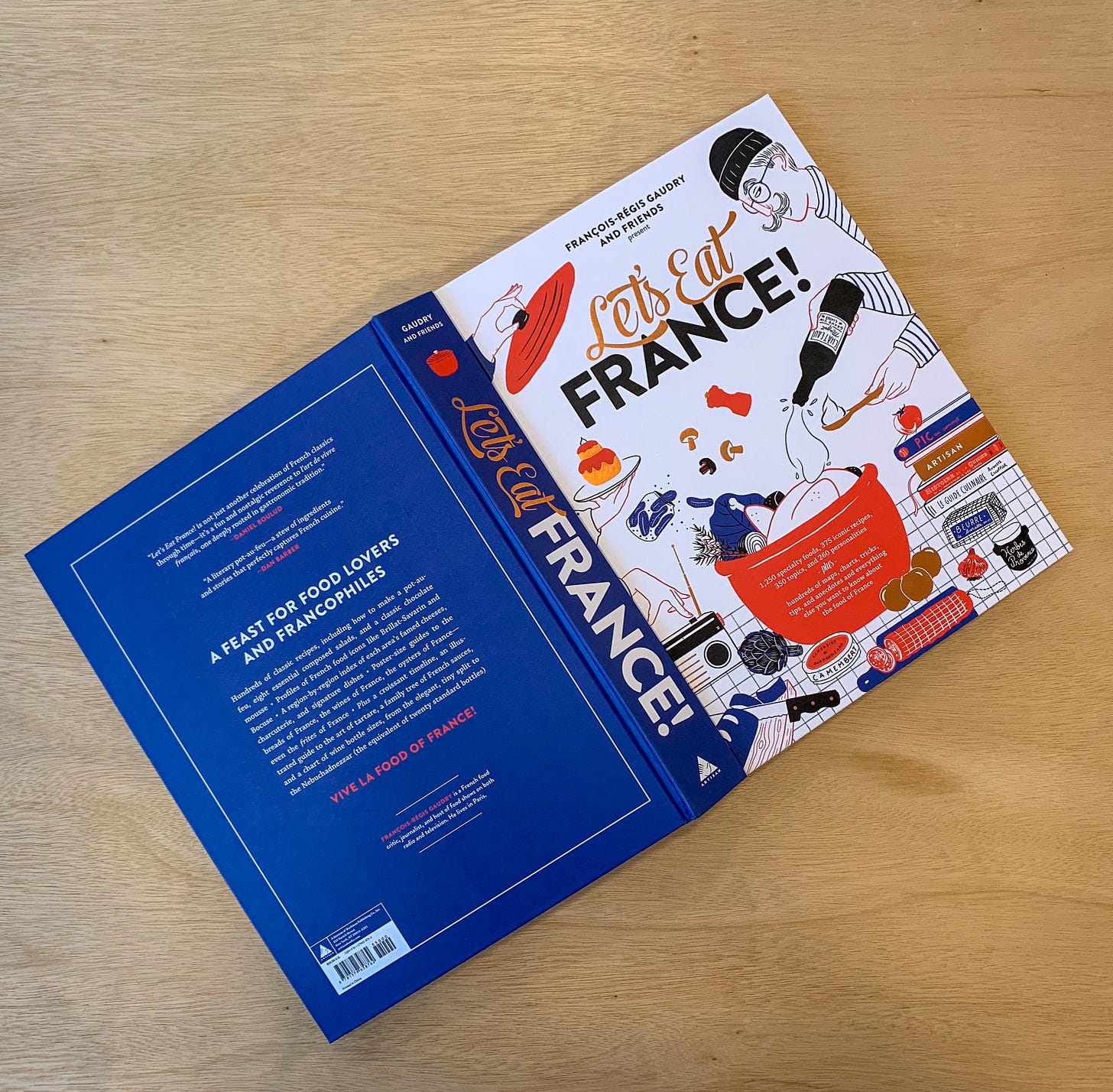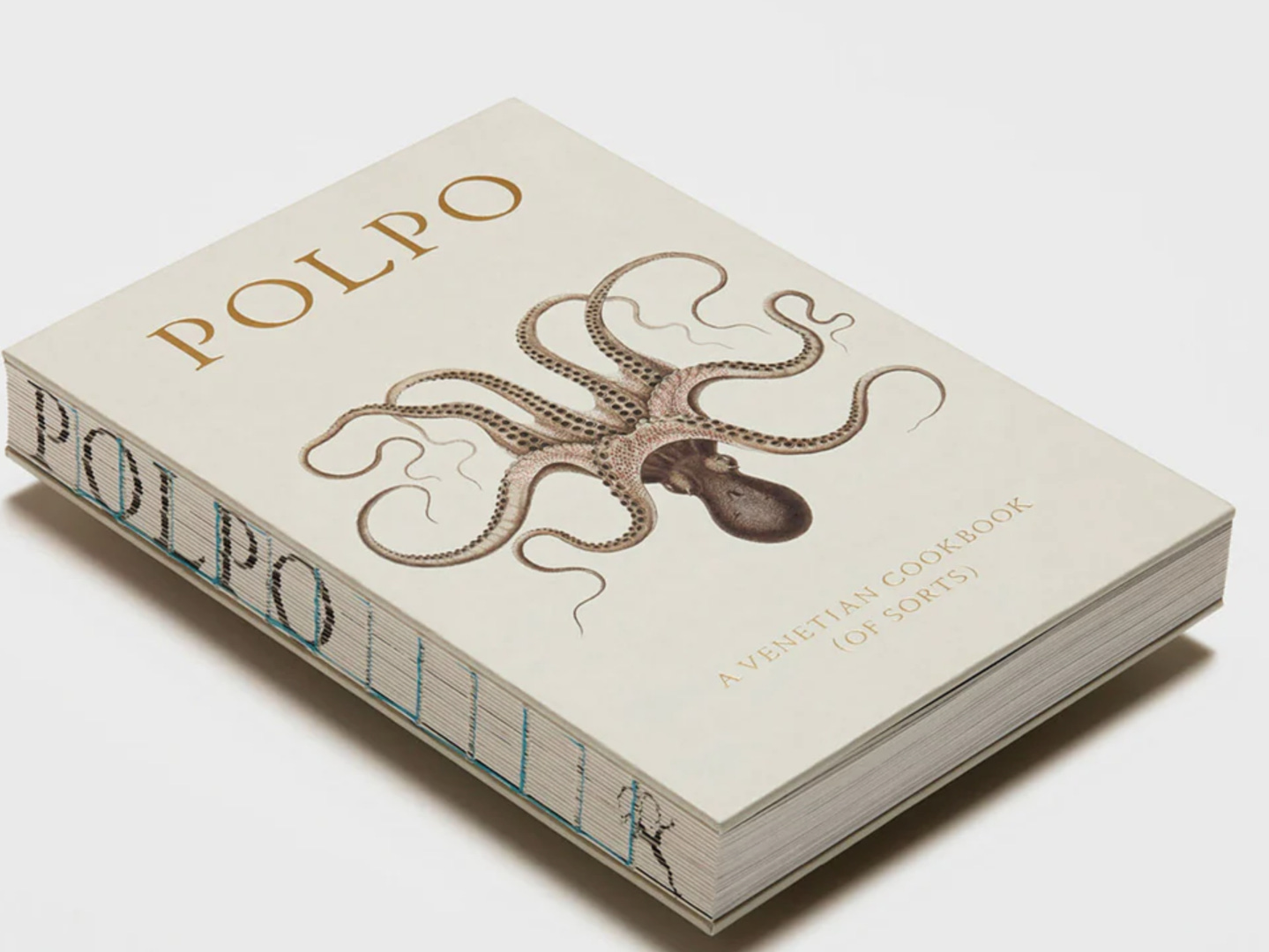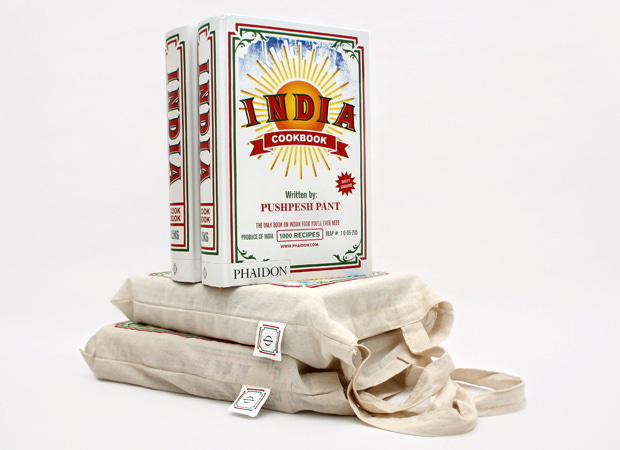The cookbooks I keep picking up
A designer’s love letter to the most beautiful objects in the kitchen.
There’s one dream project that’s been sitting quietly on my list for years: designing a cookbook.
I’ve never done one. But I’ve always wanted to.
I’ve been obsessed with cookbooks for as long as I can remember. Not just for the recipes (though I do love a good tart base), but for the object itself. Cookbooks are such beautiful things. Half instructive, half emotional. They’re full of knowledge, yes, but also full of pleasure. They teach, but they also invite.
They live on kitchen counters, open on dog-eared pages, splashed with sauce, passed down through families, abandoned at flea markets, rediscovered on shelves. They age beautifully. They hold stories.
Isn’t food, by definition, a kind of pleasure?
Cookbooks get that. They sit right at the intersection of form and function — both decorative and useful. Timeless, but tactile. That’s a dream design brief right there.
I always find myself wandering to the food section in bookstores. Not just for ideas, but because the energy there is different. It’s vibrant. It reminds me of the art section. Or the kids’ books. Playful, honest, generous (a little messy in the best way). You can tell a team of people poured their hearts into every page.
And now, with my designer eyes sharper than ever (you know the type: the kind that twitches at extra kerning or misaligned margins), I find myself buying cookbooks just for the layout. The type choices. The grid. The paper stock. The foil stamping. The colour story. It’s pure joy.
(Yes, I did just buy one yesterday. Yes, it might’ve been for the layout. Yes, it might include Lebanese recipes I might actually try.)
What Makes a Great Cookbook?
From someone who reads them like design objects (and sometimes actually cooks from them).
Cookbooks aren’t just for cooking. They’re design pieces. Storybooks. Moodboards for the kitchen.
They live in sauce-splattered stacks, but also on coffee tables and gift lists. When they’re good, they’re more than useful - they’re emotional.
Here’s what I think makes a great one: the kind you keep reaching for, even if it’s just to flick through while the kettle’s boiling.
1. The Voice
The best cookbooks talk to you, not like a teacher, but like someone in the kitchen with you. They give you permission. They share memories. They make the food feel lived-in. You’re not just learning to cook, you’re learning how someone else lives, deep passion and skills.
Bayrut: Recipes from the Heart of a Lebanese City Kitchen by Hisham Assaad
I picked this up yesterday, and honestly, it was love at first sight. The colours and the cover drew me in, but the stories kept me there. It’s full of warmth, the kind of book that makes you want to cook for a table full of people. I’ve already decided I’m making Lebanese food all week. It reads like a memory.
2. The Cover
The cover is the first impression, and it counts (trust me). It tells you how it’s going to feel to cook from it. Moody and exact? Sunlit and casual? Tuesday night pasta or long Sunday roasts? Great covers don’t try to say too much. They commit to a mood and carry it through. The colour, the type, the paper, the spine, it all adds up. A great cookbook looks like the food inside tastes.
Simple by Ottolenghi
That lemon. A flat, bold yellow circle on soft white. No photo, no clutter, sometimes it can be as simple as just one colour and a title. I don’t even own this book, but somehow it feels like I do. I see it everywhere: bookshops, Airbnb kitchens, on people’s benches. It promises flavour without fuss. Mediterranean sunshine, but make it minimal. Unforgettable because it’s so restrained, a quiet icon in a loud category.
3. The Design
This is the layout. The grid. The fonts. The margins. The way your eyes move from ingredients to method without getting lost. Good design makes you feel calm. Capable. Like someone thought about your messy fingers and your short attention span. Every decision should make the recipe feel doable. If it looks beautiful sitting open on the bench? Even better.
Le Grand Manuel du Pâtissier by Melanie Dupuis
I own this one in both French and English (Patisserie at home), that’s how much I love it. I thought the French version would be enough (it’s mostly visual), but my fiancé, who’s a pastry chef and doesn’t speak French, asked for the English one too. So we’ve got both. Every step is broken down visually: ingredients, textures, layers. It’s like flipping through a pastry blueprint. This is design that teaches, even if you’re not a chef.
4. The Imagery
Photos and illustrations define how a cookbook feels. They don’t just show you food, they show you how it should feel to make it, serve it, and share it. Good imagery brings mood, emotion, and clarity. It can be simple, graphic, lush, or raw — but it has to feel intentional.
Let’s Eat France! by François-Régis Gaudry
This is one of my favourites (they have it for different country too). It’s a bit heavy (physically and visually), but I read it like a novel. Every page is different, maps, drawings, food photos, old textures. It captures the diversity of French food without ever feeling repetitive. It blends history, culture, and recipes in a way that feels rich, generous, and completely alive.
5. The Feel
Cookbooks are made to be handled. They’re propped open with spoons, flipped with floured fingers, left stacked on kitchen chairs and open by the stove. That means the physicality matters: the weight, the paper, the binding, how the spine behaves. The best ones are a pleasure to hold. You want to keep them close, not protect them from use.
Polpo by Russell Norman
I don’t own this one (yet), but every time I see it, I stop to touch it. The uncoated paper, the exposed spine, the raw edges, it’s designed to feel like a restaurant table. Even if you never make a dish, you want to keep it on your shelf. It’s a perfect example of how finish is the brand.
6. The Extras
Some cookbooks have a little twist. A surprise that doesn’t need to be there, but makes it better and who doesn’t love surprises? It might be how it’s packaged, a clever binding, an unexpected material, or something fun hidden inside. These extras don’t just add novelty, they create a sense of care. They make the book more memorable and more lovable.
India: The Cookbook by Pushpesh Pant
This one comes in a mini rice sack, and yes, it’s a little ridiculous but I absolutely LOVE IT. But it made me grin the first time I saw it. It feels like a gift. Like someone packed it just for you. You remember it before you even open it, and that’s the kind of joy that sticks (and good marketing as well).
And one day…
One day, I’ll design one.
Until then, I’ll keep collecting, stacking them high, flipping through them like treasure maps, and falling for every embossed cover and ribbon bookmark that crosses my path. I might even start a running list — the cookbooks I keep picking up, for the layout, the feeling, the flavour, or just because they look good next to a coffee.
Would you want to see that?
Bon Appétit, À bientôt!
Mary





